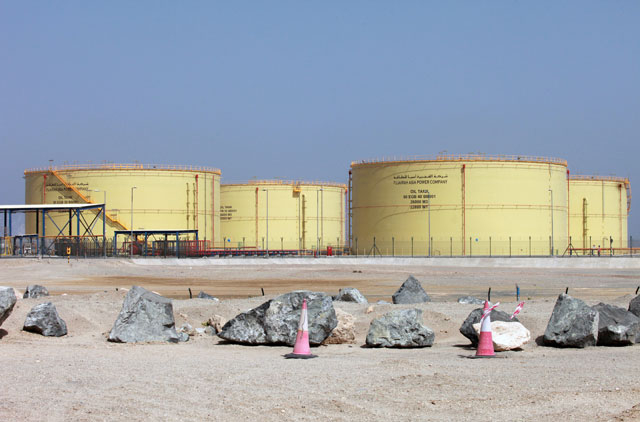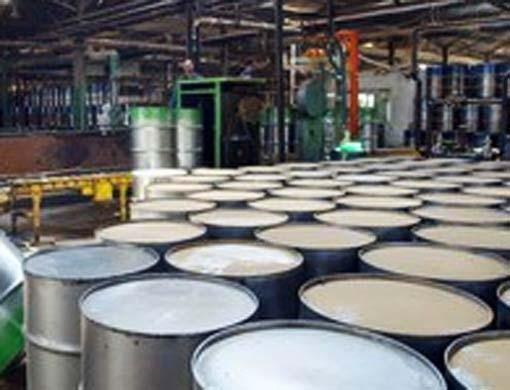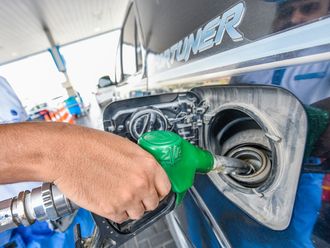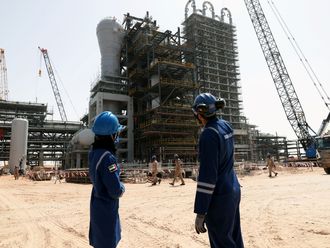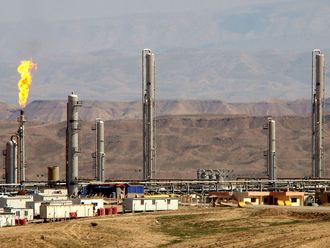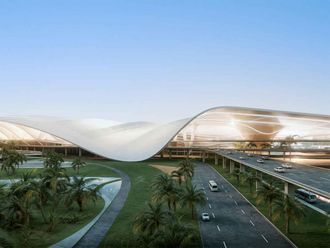On a tour of Fujairah one can see first hand what years of $100 oil afforded a big Gulf producer like the UAE, a state-of-the art export hub to compete with the likes of Rotterdam and Singapore.
Fujairah, one of seven emirates making up the UAE, rose in strategic importance after the UAE Government spent over $3 billion (Dh11 billion) to build a pipeline to carry crude from Abu Dhabi’s oilfields to this sparsely populated outpost, which bypasses the Strait.
“Fujairah is sending the products of the Gulf countries to the east whether it is going directly to China or a transshipment to Singapore,” said Siavash Alishahpour, Managing Director of terminal operator VTTI, as we observe yet another million-barrel crude carrier being loaded up for Asia.
From the control rooms of the UAE stretching north to the eastern province of Saudi Arabia, the four big Gulf producers — which include Kuwait and Qatar — are leading a fierce battle to protect OPEC’s global market share by forcing others, like US shale producers and Russia’s state energy giants, to live with lower prices.
Saudi Arabia’s veteran oil minister led that charge at the Opec meeting back in November and clarified that decision three weeks later in a CNN interview. “We’re not going to cut production ... certainly Saudi Arabia is not going to cut,” said Ali Al Naimi. Asked if that position will hold for the first-half of 2015, he bluntly stated, “No, it’s the position that will hold forever.”
Forever is a long time, but after discovering oil nearly eight decades ago, many believe the Kingdom is also out to protect its legacy. The merits of the Saudi-led strategy will be debated behind closed doors at the Opec ministerial meeting in Vienna on Friday. Most don’t expect any change in policy, which is proving to be a costly decision.
Despite a 40 per cent recovery since January, the IMF estimates the Gulf producers will forego $287 billion of revenues this year. They have however entered this battle with $2.4 trillion of sovereign savings, according to the Sovereign Wealth Fund Institute, a hefty war chest for countries with a collective population of less than 50 million people.
Nureddin Sehweil, an American educated oil services CEO based in the UAE since 1979, said these players can also leverage the world’s lowest cost of production, estimated to be $2-$10 a barrel. “We do have a great advantage over many nations, neighbours and even in Africa and, for instance, in South America,” said Sehweil of Uni-Arab Oil Services.
The Gulf neighbours he’s referring to would be Iran and Iraq, the African producers Algeria, Angola and Nigeria, plus Venezuela in South America. All six have a break even price close to $100 a barrel and failed to block the decision driven by the Gulf heavyweights.
For now, the collective response by the 12-nation grouping is to go flat out with production, hitting 31.2 million barrels a day in April according to the Paris-based International Energy Agency, well above a stated quota of 30 million barrels.
Life may get more complicated if a nuclear deal is reached by the end of the month between Iran and the P5+1 nations. Iran’s production at 2.8 million barrels is the highest in nearly three years. The country with the second largest proven reserves in the Middle East, at 157 billion barrels, is poised to add another one-and-a-half million barrels daily if given the green light.
“If Opec maintains its current strategy and if Iran ramps up its production and some of the other producers in West Africa and other places continue to produce, I cannot see $100 oil anytime soon, “ said Steve Brann, Managing Director of commodity trader Vitol Dubai.
It’s the price the Gulf producers seem willing to endure in an effort to counter a rise in global production from the US to Russia.
The writer is CNN’s Emerging Markets Editor.


